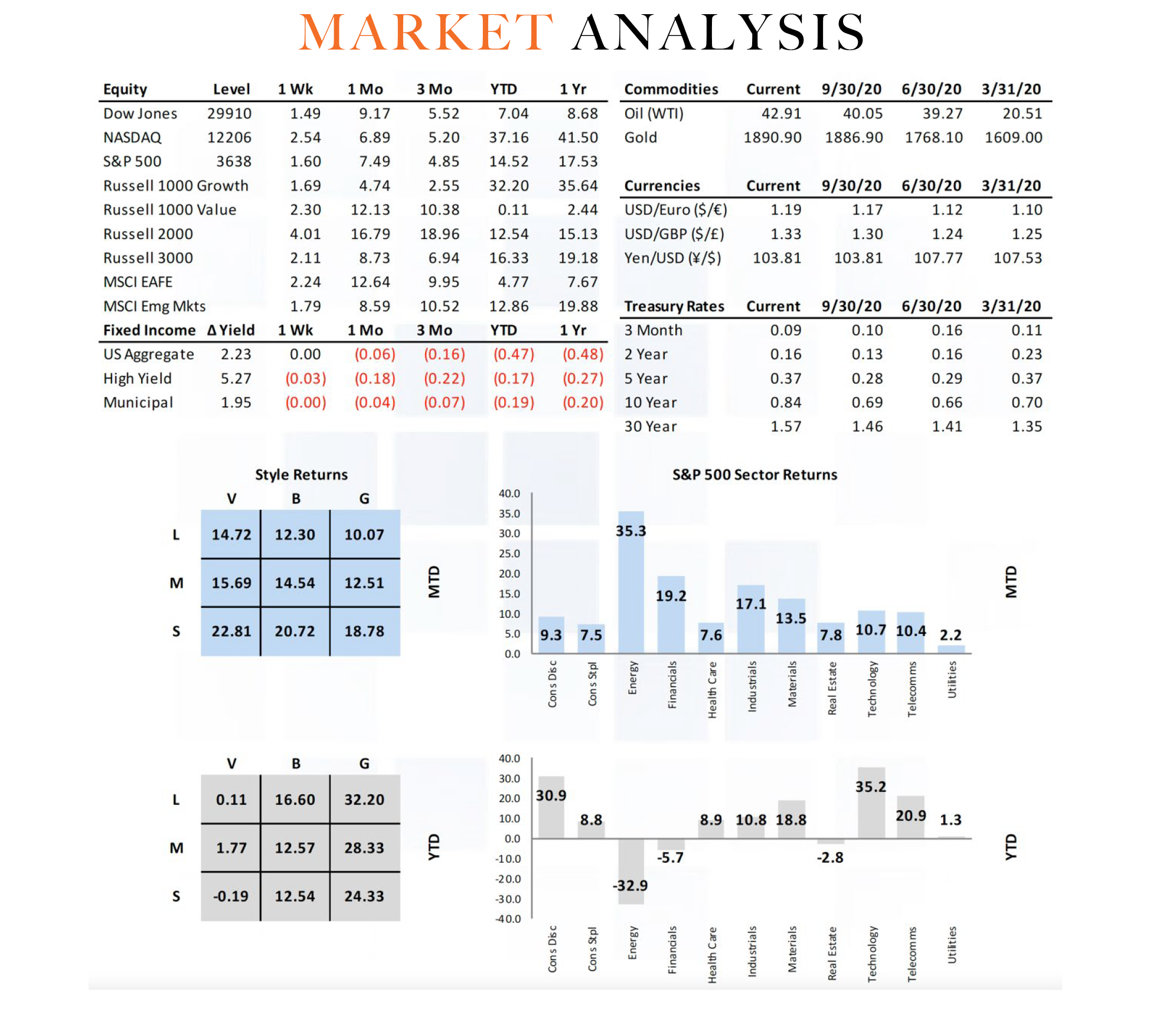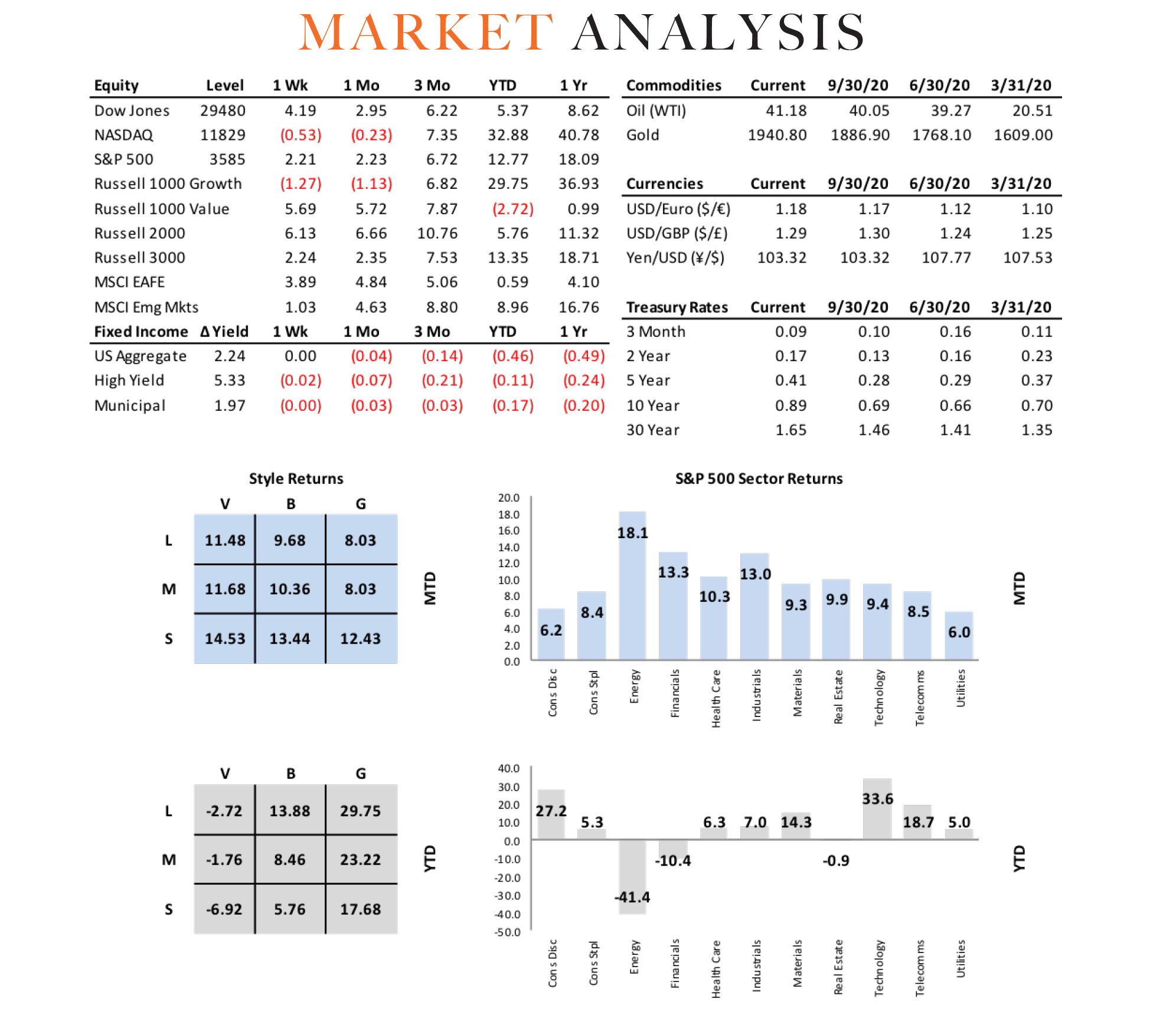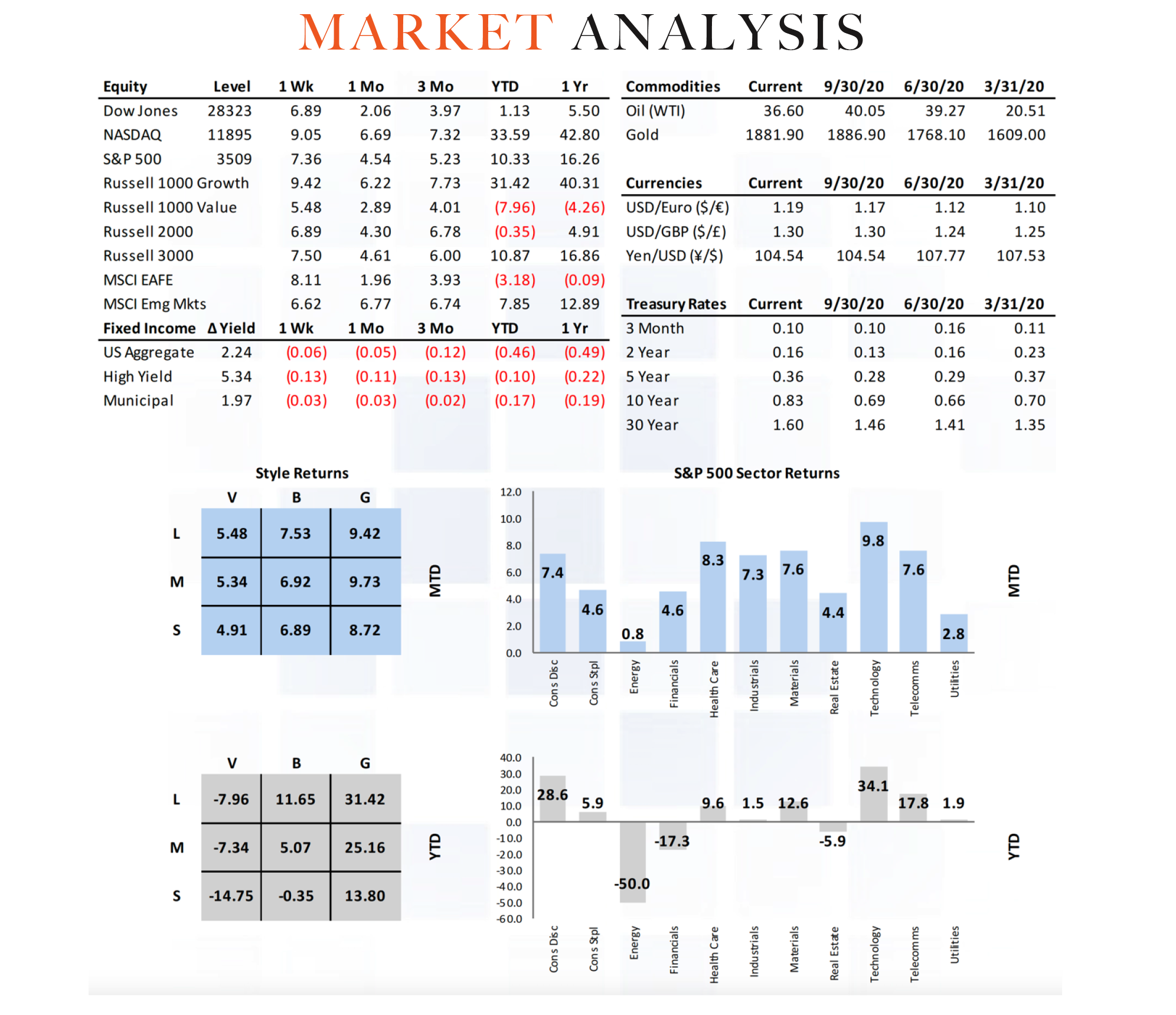The S&P 500 sees healthy gains during holiday week
The holiday shortened Thanksgiving week began with a third consecutive Monday morning booster shot (AstraZeneca) which sustained throughout the week leaving the S&P 500 with a healthy 2.3% gain.
U.S. small cap, developed, and emerging market equities again outperformed U.S. large caps. The ‘risk-on’ trade took cyclical parts of the market higher with banks, energy, and materials leading the way while REITs, healthcare, and consumer staples lagged. The S&P 500 is now up 7.99% since Election Day and up 12.6% for the year. Commodity markets were up sharply with industrial metals and oil (+8%) rallying while gold lost more ground, now back below its 200dma. Longer duration treasury rates edged slightly higher with the 10 year U.S. Treasuary now at 0.84% but shorter rates remained anchored.
Market Anecdotes
• Alpine Macro addressed ‘bubble’ and mania valuation sentiments in a recent equity strategy piece highlighting the differences between Nifty Fifty ‘72, Tech Bubble (‘00), and FANMAG (‘20).
• Ned Davis made note of near-term excessive optimism they see in the market, likely stemming from recent vaccine and political developments.
• Leuthold Group highlighted the relatively attractive valuation for small caps, making the case that both SCV (17x) and SCG (24x) are historically cheap relative to historical averages. Small growth is trading at approximately 50% of valuation measures it reached in ‘00.
• Commodities, particularly copper, continued to benefit from the strong bid for cyclical assets, up 3.22% last week. For the first time since 2011, all 18 major commodity indices are above their 200 DMA.
• The Fed is expected to ramp up longer duration UST purchases in light of the Treasury announcement of sunsetting Fed bond facilities and may now be considering supplemental monetary action at their upcoming December meeting.
• The weekly Fed balance sheet report showed the consolidated balance sheet surging $67b to a new record $7.24t. The ECB balance sheet marked a new high last week as well.
• Biden has stepped up pressure on the Democratic caucus to move more meaningfully toward the Republican offer, putting his weight behind a compromise smaller lame duck package.
• Barings highlighted capital inefficiencies currently prevailing in private equity where 70% ($366b) of capital raised from ‘15-’19 is targeting large cap businesses which account for less than 1% of firms (2,000). Only 7% ($37b) of raised capital is targeting lower middle market businesses which account for nearly 96% of firms (440k).
Economic Release Highlights
• November flash U.S. PMIs (C, S, M) all came in handily above consensus and now are now deeply in expansionary territory at 57.9, 56.7, and 57.7 respectively.
• EZ PMIs (45.1, 53.6, 41.3) missed expec-tations while the U.K. (47.4, 55.2, 45.8) beat handily across the board.
• October’s Personal Income and Outlays report revealed disappointing personal income (-0.7% v 0.1%) but in line PCE growth of 0.5%. Core PCE price index was in line as well at 1.4% YoY.
• October durable goods report came in higher than expected across headline (1.3% v 0.9%), Ex-transports (1.3% v 0.3%), and core goods (0.7% v 0.6%) components.
• Conference Board consumer confidence for November came in short of consensus (96.1 v 98.0) likely reflecting the CoVid surge and policy uncertainty in the coming months.
• November’s final University of Michigan consumer sentiment reading fell to 76.9, short of con-sensus estimate of 77.2, likely a reflection of Republican initial sentiment after the election.
• Case-Shiller House Price Index continued its torrid pace in September, coming in well above expectations (1.3% v 0.5% MoM) (6.6% v 5.4% YoY) across the 20 metro region samples.
W E E K E N D I N G 11 / 27 / 2 0
INSIGHT
MARKET ANALYSIS





